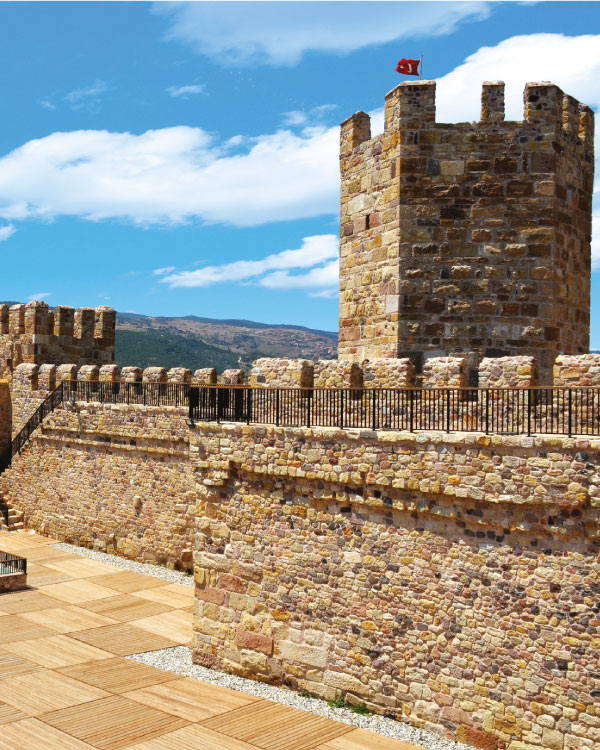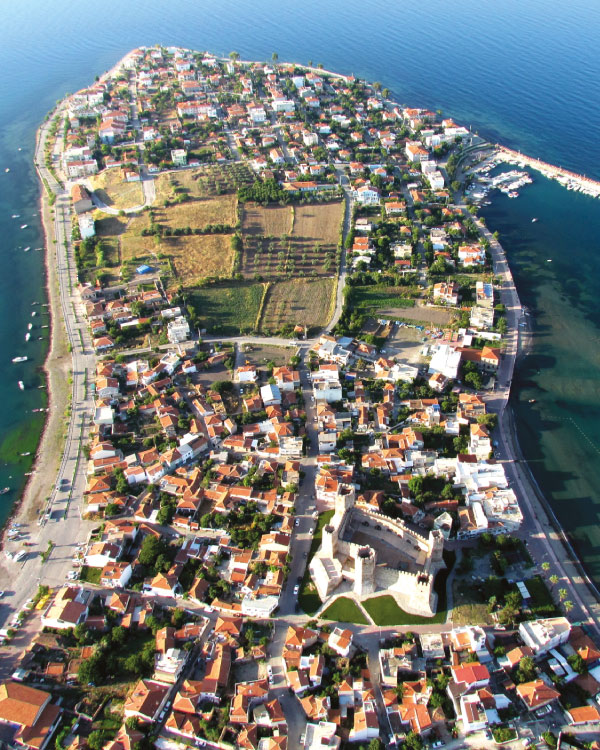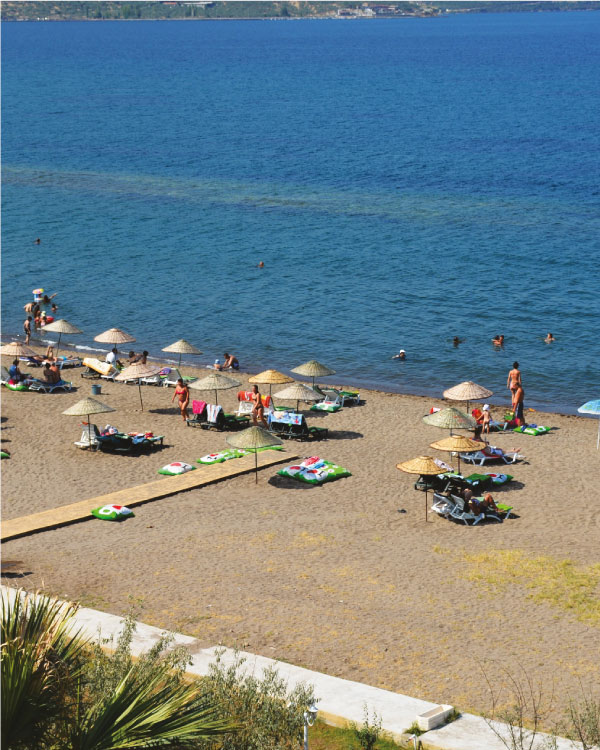DİKİLİ
Çanakkale’den ve Balıkesir’den gelen kara yolları Edremit yakınlarında kesişir ve Ayvalık üzerinden İzmir’ e ulaşan yolu başlatırlar.
Bu yol Madra Çayı’nı geçtikten sonra Dikili sapağına gelir, güneye ayrılan 4km’lik yol sizi Dikili ilçe merkezine getirir.
Sulak, verimli toprakları, ılıman iklimi ve Midilli adası ile Bergama’ ya (o zamanlar Pergamon ) yakınlığı Dikili ve yöresinin çok eski çağlarda yerleşime açılmasına neden olmuştur. İÖ 5- 4. yıllarda antik Atemaus kenti ilçe sınırları içindedir.
Kent kalıntıları günümüzde Dikili – Bergama karayolu Ağılkale ve Kaletepe üzerindedir. İlçenin Çandarlı bucağında yapılan kazılarda İÖ 10. yüzyılda kurulduğu hesaplanan Pitane antik kenti ortaya çıkarılmıştır.
Dikili bir yarımadanın kuzeyinde, Çandarlı aynı yarımadanın güneyindedir. İki kenti yarımadanın üstünden geçen 19 km’lilik bir yol birbirine bağlar.
Dikili’nin bulunduğu bu yöreye Mysia adı verilmiş, Hititliler ise Assuwa demişlerdir.
Hititlilerden sonra yöreye Eolyalılar, Lidyalılar, Persler, Yunanlılar, Romalılar, Bizanslılar, Cenovalılar, Selçuklular ve Osmanlılar hakim olmuşlardır. 13 Haziran 1919’ da Yunan işgaline uğrayan yöre 14 Eylül 1922’ de kurtarılmıştır.
İlçe merkezi Dikili, 1939’ da büyük bir depremle yıkılmış, yeniden inşa edilmiştir. Dikili, hareketli bir gümrük kapısıdır. Pergamon ile İzmir’ e gelen turistlerin çoğu Dikili’ den Türkiye’ye girerler.
Yörenin bir başka özelliği termal içmece, kaplıca ve ılıcalarıdır. Kayıtlara göre bu kaplıca ve ılacalar 3 bin yıldan beri güzellik ve şifa dağıtmaktadır. O kadar ki Dikili ile Bergama arasında bulunan büyük bir bataklık fokur fokur kaynayan sıcak sularından ötürü Kaynarca adını almıştır.
Kaplıca ve Ilıcalar
Eski tarihlerden beri hastaların ağrı ve sızılarından kurtulmak, sağlık bulmak, tedavi olmak ve gençleşip güzelleşmek için başvurdukları ünlü kaplıca, ılıca ve çamur banyolarının en çok bilinenleri Nebiler ılıcası, Koca Oballıcası, Bademli Denizi, ve çamur ılıcası olup, bu kaplıca ve ılıcalar günümüzde de hizmet vermektedir.
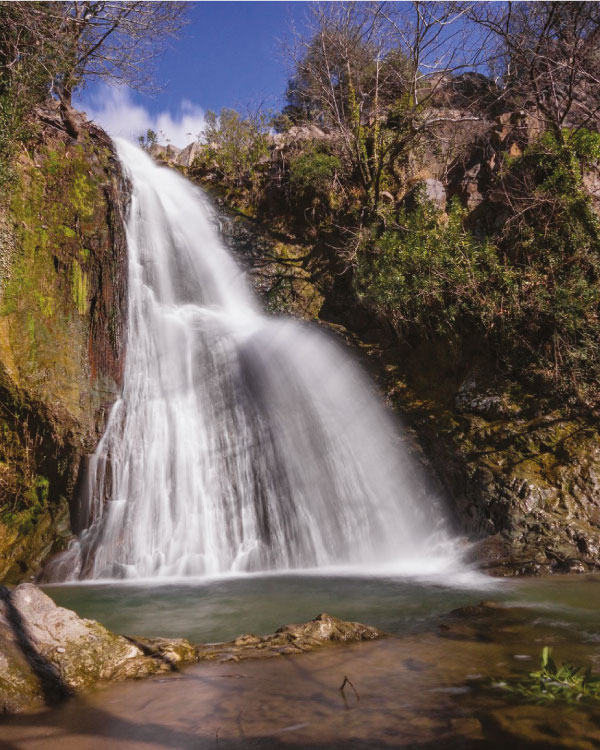
Yürüyüş rotaları, şelaleler, göller, yaylalar…
The district centre Dikili was destroyed by a big earthquake in 1939 and rebuilt. Dikili is a moving customs gate. Most of the tourists who come to Izmir and Pergamon enter Turkey from Dikili.
Another feature of the region is its thermal springs, hot springs and mineral springs. According to the records, these spas and medicines have been delivering beauty and healing for 3.000 years. So much so that a large swamp between Dikili and Bergama was named Kaynarca because of its boiling hot waters.
Thermal and hot springs
The most well-known of the famous thermal springs, hot springs and mud baths, where patients came to get rid of aches and pains, to find health, to be treated and to rejuvenate and beautify since ancient times, are Nebiler Spa, Koca Oballıca, Bademli Sea, and mud spa and nowadays these thermal and hot springs are still providing service.
Most of those who want to benefit from thermal waters are rheumatism, arthritis, skin and kidney patients. Thermal mud is also said to remove wrinkles and treat cellulite.
The fate of Dikili was tied to the fate of Pergamon (Pergamon) for
centuries. Its first establishment began in the 5th century BC, 25 km from the coast, and declared its independence in 203 BC, and passed under the rule of the Attalos dynasty.
Attalos made the city Pergamon the most beautiful and powerful of the known cities of that time. The Pergamon Library was the largest library of the age after the Library of Alexandria, and the most famous scientists and artists of the age gathered in the city of Pergamon. The city of Pergamon, known as the most magnificent work of the Hellenistic world, is also the largest example of monumental architecture.
The city was established on the southern slopes of a mountain that dominates the Bakırçay valley. The main road, which is only 5 m wide, winds through shops, marketplaces, houses, official flats and temples and leads to the upper Acropolis. From the Acropolis, Dikili and its shores have a magnificent view. It is impossible to walk the path on foot. Private vehicle or taxi is required.
The water collected from the highest points of the mountain is distributed to the houses, fountains, theatres, stadiums and marketplaces of the city. Excess rain water and waste water are released to Bakırçay, which passes through the valley.
Many architecture and engineering students from Japan to the USA come to see Pergamon every year.
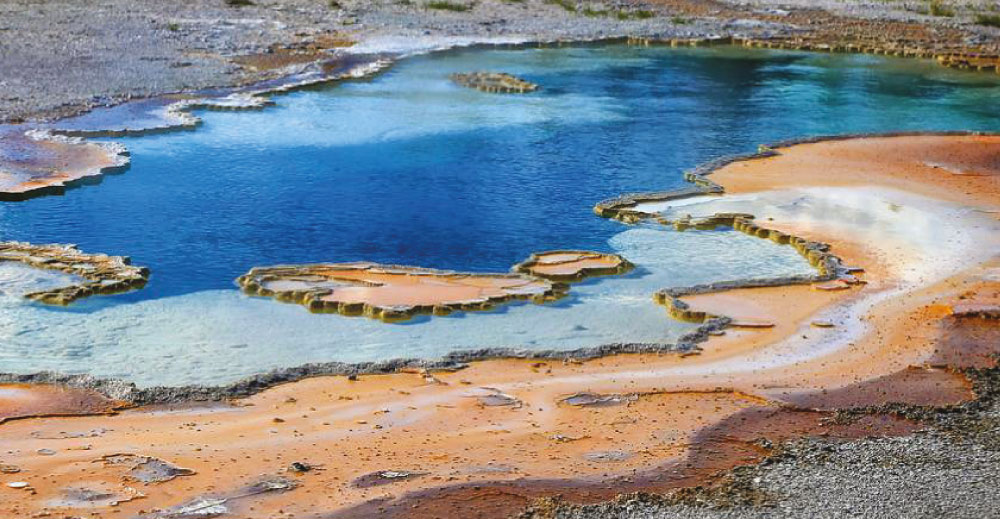
Dikili Today
In 1960s started the domestic tourism in our country with the decisions and incentives taken by the government on tourism. When on one hand the press and media organs told about the natural beauties of Turkey and the importance and benefits of tourism on the other, tourism became active and tourism investments increased.
People bought houses and land on the Mediterranean and Aegean coasts one by one and often in cooperatives and created summer facilities. Everything like traveling, seeing, listening that a tourist is looking for is available in Dikili. Mediterranean sun, miles of sandy beach, silence and peace. Beaches, coves, peninsulas ideal for swimming and diving…
Walking routes, waterfalls, lakes, plateaus…
Dikili, which is 118 km from Izmir, 29 km from Bergama and 18 miles from Lesbos, offers unique opportunities for history buffs. Even watching the sunset from Dikili shores gives great pleasure.
ATATÜRK BOTANICAL GARDEN TAKES YOU TO ANOTHER WORLD WITH ITS NEARLY THREE THOUSAND PLANT VARIETIES AND FLOWERS. IN THE GARDEN, THERE ARE THE MOST BEAUTIFUL AND INTERESTING SPECIMENS IN THE PLANTS AND FLOWERS ARE FOUND IN A WIDE AREA FROM THE TROPICS TO THE ALPS.
Olive and olive oil have an important role in the health and longevity of Mediterranean people. The olive groves that you come across at every step in Dikili are the important income sources of Dikili. So are greenhouses. The reason why Turkey’s largest greenhouses are located in Dikili is the production of fresh cucumbers, peppers and tomatoes with thermal waters. All products are sold abroad. Tourists from Lesbos and Bergama generally prefer Nebiler Village for trekking. There is a waterfall, a cave, and centuries-old trees. The famous Nebiler Hot Spring heals the sick in the south of the village. The remains of the ancient city of Atarneus, defined by the historian Herodotus as the city where the Greeks and Persians fought, are on Hatipler Hill. Bademli Bay, which is 15 km away from the center of Dikili, is a real natural wonder with its beaches, islands and islets.
Bademli Gulf gradually narrows and enters the land. Its slopes are covered with lush green trees. The villagers quite appropriately call the gulf moving across the land as “Dalyan”. When the fish enter the gulf to spawn, the entrance is closed with nets and a natural fishpond is formed. The fresh fishes of Bademli are caught here. You can taste these fishes in the restaurant with a garden on the edge of Dalyan.
One of the important historical and tourism richness of our country and Dikili is the Çandarlı, the subdistrict of Dikili. Çandarlı takes its name from Çandarlı Halil Pasha, one of the great grand viziers of Sultan Murad II. The first castle built by the Genoese in the 13th and 14th centuries was repaired and enlarged with addenda.
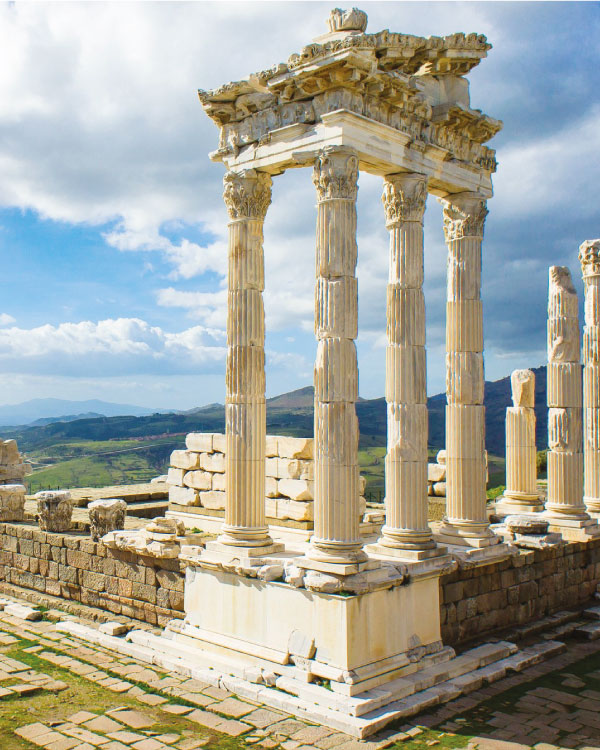
Termal sulardan yararlanmak isteyenlerin çoğu romatizma, kireçlenme, cilt ve böbrek hastalarıdır. Termal çamurun kırışıklıkları giderdiği ve selüliti tedavi ettiği de söylenir.
Dikilinin kaderi yüzyıllar boyunca Bergama’nın (Pergamon) kaderine bağlı kalmıştır. İlk kuruluşu kıyıdan 25km içerde İÖ. 5.yüzyılda başlamış, İÖ. 203’te bağımsızlığını ilan edip, Attalos hanedanın yönetimine geçmiştir.
Attalos Pergamon kentini o zamanın bilinen kentlerin en güzeli, en güçlüsü yapmışlardır. Pergamon Kütüphanesi, İskenderiye Kütüphanesinden sonra çağın en büyük kütüphanesi olmuş çağın en ünlü bilim adamları ve sanatçılar Pergamon şehrinde toplanmıştır. Hellenistik dünyanın en muhteşem eseri olarak bilinen Pergamon kenti anıtsal mimarinin de en büyük örneğidir.
Kent,Bakırçay vadisine hakim bir dağın güney yamaçlarında kurulmuştur. Sadece 5 m genişliğindeki ana yol kıvrıla kıvrıla dükkanların, pazaryerlerinin, evlerin, resmi daire ve tapınakların arasından geçerek yukarı Akropolis’ e çıkar. Akropolisten Dikili ve kıyılarının nefis bir görünümü vardır. Yolu yaya olarak yürümek imkansızdır. Özel araç ya da taksi gerekir.
Dağın en yükseklerinden toplanan su kentin evlerine, çeşmelerine, tiyatro, stadyum ve pazaryerlerine dağıtılır. Yağmur sularının fazlası ve atık su vadiden geçen Bakırçay’ a bırakılır.
Japonyadan ABD’ye çok sayıda mimarlık ve mühendislik öğrencisi her yıl Pergamon’ u görmeye gelir.
Günümüzde Dikili
Ülkemizde iç turizm 1960’ lı yıllarda hükümetin turizm konusunda aldığı kararlar ve teşvikler ile başlar. Basın ve yayın organları bir yandan Türkiye’nin doğal güzelliklerini, diğer yandan da turizm konusunun önemini ve kazançlarını anlattıkça turizm hareketlenir, turizm yatırımları artar.
İnsanlar tek tek ve çoğu zaman kooperatifler halinde Akdeniz ve Ege kıyılarında evler, arsalar satın alıp yazlıklar tesisler oluştururlar. Gezmek, görmek, dinlemek bir turistin aradığı her şey Dikili’de vardır. Akdeniz güneşi, kilometrelerce uzayan, bol kumlu kumsal sessizlik ve huzur. Yüzmek ve dalmak için ideal plajlar, koylar, yarımadalar…
Yürüyüş rotaları, şelaleler, göller, yaylalar…
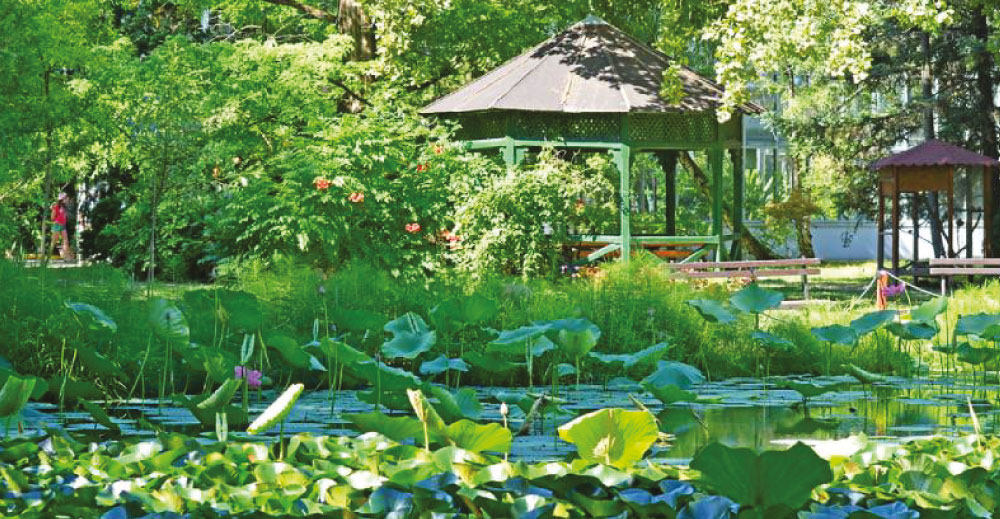
İzmir’e 118 km, Bergama’ya 29 km, Midilli’ye 18 mil uzaklıkta olan Dikili tarih meraklıları için bulunmaz fırsatlar sunar. Dikili kıyılarından güneşin batışını izlemek bile büyük zevk verir.
Atatürk Botanik Bahçesi üç bine yaklaşan bitki çeşidi ve çiçekleriyle sizi başka bir dünyaya götürür. Bahçe’de tropik bölgelerden Alp Dağları’na kadar uzanan geniş bir alanın bitki ve çiçeklerinde en güzel, en ilginç örnekler yer alır.
Akdeniz insanlarının sağlıklı ve uzun ömürlü olmalarında zeytin ve zeytinyağının önemli payı vardır. Dikili’de adım başında karşınıza çıkan zeytinlikler Dikililerin önemli kazanç kapılarıdır. Seralar da öyledir. Türkiye’nin en büyük seralarının Dikili’de bulunmasının nedeni termal sularla yapılan turfanda salatalık, biber, domates üretimidir. Ürünlerin tümü yurtdışına satılır. Midilli ve Bergama’dan gelen turistler genellikle trekking için Nebiler Köyü’ nü tercih ederler.
Burada bir şelale, bir mağara, asırlık ağaçlar bulunur. Ünlü Nebiler Ilıcası köyün güneyinde hastalara şifa dağıtır. Tarihçi Heredot’ un Yunanlılar ile Perslerin savaştığı kent olarak tanımladığı Atarneus antik kentinin kalıntıları Hatipler Tepesindedir. Dikili merkezine 15 km uzaklıkltaki Bademli koyu plajları, ada ve adacıkları ile gerçek bir doğa harikasıdır.
Bademli körfezi giderek daralır ve karanın içine girer. Yamaçları yemyeşil ağaçlarla kaplıdır. Köylüler çok yerinde olarak karada ilerleyen körfeze “ Dalyan” derler. Balıklar yumurtlamak için körfeze girdiklerinde giriş, ağlarla kapatılır ve doğal bir dalyan oluşur. Bademli’nin taze balılkları burada avlanır. Dalya’ nın kenarındaki bahçeli lokantada bu balıkların tadına bakabilirsiniz.
Ülkemizin ve Dikili’ nin önemli tarih ve turizm zengiliklerin biriside Dikili’ nin Çandarlı bucağıdır. Çandarlı adını Sultan 2. Murad’ ın büyük sadrazamlarından Çandarlı Halil Paşa’ dan alır. 13. Ve 14. Yüzyıllarda Cenevizlilerin yaptıkları ilk kale onartılıp, eklerle büyütülmüştür.
The highways from Çanakkale and Balıkesir crossing near Edremit and the road that reaches İzmir via Ayvalık starts.
After passing the Madra Stream, this road comes to the Dikili turn, and the 4km road to the south brings you to the Dikili district centre.
Its well-watered, fertile lands, mild climate and its proximity to Lesbos island and Bergama (then Pergamon) caused Dikili and its region to be opened to settlement in ancient times. In the 5th and 4th years BC, the ancient city of Atemaus was within the district borders. The ruins of the city are today on the Dikili – Bergama highway Ağılkale and Kaletepe. The ancient city of Pitane, which is thought to have been founded in the 10th century BC, was unearthed during the excavations in the Çandarlı subdistrict of the district.
Dikili is in the north of a peninsula, Çandarlı is in the south of the same peninsula. A 19 km long road which is crossing the peninsula connects the two cities. This region where Dikili is located was called Mysia, and the Hittites called it Assuwa.
The highways from Çanakkale and Balıkesir crossing near Edremit and the road that reaches İzmir via Ayvalık starts.
After passing the Madra Stream, this road comes to the Dikili turn, and the 4km road to the south brings you to the Dikili district centre.
Its well-watered, fertile lands, mild climate and its proximity to Lesbos island and Bergama (then Pergamon) caused Dikili and its region to be opened to settlement in ancient times. In the 5th and 4th years BC, the ancient city of Atemaus was within the district borders. The ruins of the city are today on the Dikili – Bergama highway Ağılkale and Kaletepe. The ancient city of Pitane, which is thought to have been founded in the 10th century BC, was unearthed during the excavations in the Çandarlı subdistrict of the district.
Dikili is in the north of a peninsula, Çandarlı is in the south of the same peninsula. A 19 km long road which is crossing the peninsula connects the two cities. This region where Dikili is located was called Mysia, and the Hittites called it Assuwa.
After the Hittites, Eolians, Lydians, Persians, Greeks, Romans, Byzantines, Genoans, Seljuks and Ottomans reigned the region. The region, which was occupied by the Greeks on June 13, 1919, was liberated on September 14, 1922.
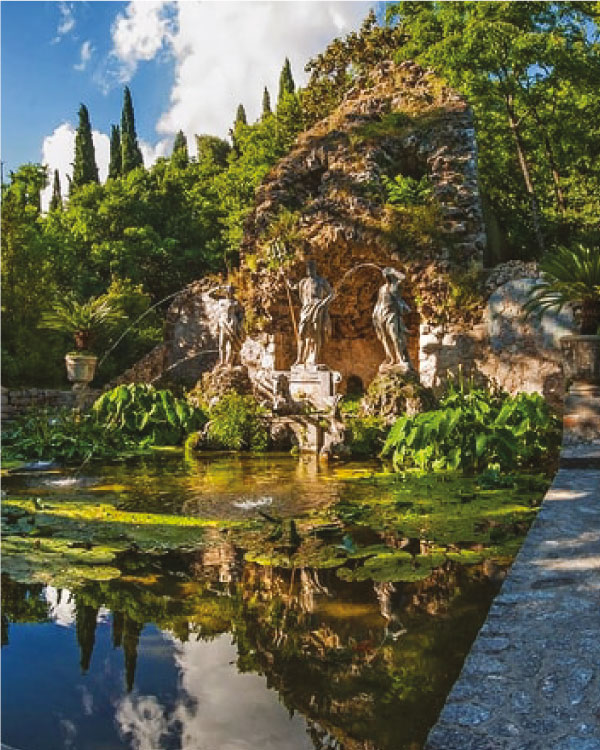
Walking routes, waterfalls, lakes, plateaus…
The district centre Dikili was destroyed by a big earthquake in 1939 and rebuilt. Dikili is a moving customs gate. Most of the tourists who come to Izmir and Pergamon enter Turkey from Dikili.
Another feature of the region is its thermal springs, hot springs and mineral springs. According to the records, these spas and medicines have been delivering beauty and healing for 3.000 years. So much so that a large swamp between Dikili and Bergama was named Kaynarca because of its boiling hot waters.
Thermal and hot springs
The most well-known of the famous thermal springs, hot springs and mud baths, where patients came to get rid of aches and pains, to find health, to be treated and to rejuvenate and beautify since ancient times, are Nebiler Spa, Koca Oballıca, Bademli Sea, and mud spa and nowadays these thermal and hot springs are still providing service.
Most of those who want to benefit from thermal waters are rheumatism, arthritis, skin and kidney patients. Thermal mud is also said to remove wrinkles and treat cellulite.
The fate of Dikili was tied to the fate of Pergamon (Pergamon) for
centuries. Its first establishment began in the 5th century BC, 25 km from the coast, and declared its independence in 203 BC, and passed under the rule of the Attalos dynasty.
Attalos made the city Pergamon the most beautiful and powerful of the known cities of that time. The Pergamon Library was the largest library of the age after the Library of Alexandria, and the most famous scientists and artists of the age gathered in the city of Pergamon. The city of Pergamon, known as the most magnificent work of the Hellenistic world, is also the largest example of monumental architecture.
The city was established on the southern slopes of a mountain that dominates the Bakırçay valley. The main road, which is only 5 m wide, winds through shops, marketplaces, houses, official flats and temples and leads to the upper Acropolis. From the Acropolis, Dikili and its shores have a magnificent view. It is impossible to walk the path on foot. Private vehicle or taxi is required.
The water collected from the highest points of the mountain is distributed to the houses, fountains, theatres, stadiums and marketplaces of the city. Excess rain water and waste water are released to Bakırçay, which passes through the valley.
Many architecture and engineering students from Japan to the USA come to see Pergamon every year.

Dikili Today
In 1960s started the domestic tourism in our country with the decisions and incentives taken by the government on tourism. When on one hand the press and media organs told about the natural beauties of Turkey and the importance and benefits of tourism on the other, tourism became active and tourism investments increased.
People bought houses and land on the Mediterranean and Aegean coasts one by one and often in cooperatives and created summer facilities. Everything like traveling, seeing, listening that a tourist is looking for is available in Dikili. Mediterranean sun, miles of sandy beach, silence and peace. Beaches, coves, peninsulas ideal for swimming and diving…
Walking routes, waterfalls, lakes, plateaus…
Dikili, which is 118 km from Izmir, 29 km from Bergama and 18 miles from Lesbos, offers unique opportunities for history buffs. Even watching the sunset from Dikili shores gives great pleasure.
ATATÜRK BOTANICAL GARDEN TAKES YOU TO ANOTHER WORLD WITH ITS NEARLY THREE THOUSAND PLANT VARIETIES AND FLOWERS. IN THE GARDEN, THERE ARE THE MOST BEAUTIFUL AND INTERESTING SPECIMENS IN THE PLANTS AND FLOWERS ARE FOUND IN A WIDE AREA FROM THE TROPICS TO THE ALPS.
Olive and olive oil have an important role in the health and longevity of Mediterranean people. The olive groves that you come across at every step in Dikili are the important income sources of Dikili. So are greenhouses. The reason why Turkey’s largest greenhouses are located in Dikili is the production of fresh cucumbers, peppers and tomatoes with thermal waters. All products are sold abroad. Tourists from Lesbos and Bergama generally prefer Nebiler Village for trekking. There is a waterfall, a cave, and centuries-old trees. The famous Nebiler Hot Spring heals the sick in the south of the village. The remains of the ancient city of Atarneus, defined by the historian Herodotus as the city where the Greeks and Persians fought, are on Hatipler Hill. Bademli Bay, which is 15 km away from the center of Dikili, is a real natural wonder with its beaches, islands and islets.
Bademli Gulf gradually narrows and enters the land. Its slopes are covered with lush green trees. The villagers quite appropriately call the gulf moving across the land as “Dalyan”. When the fish enter the gulf to spawn, the entrance is closed with nets and a natural fishpond is formed. The fresh fishes of Bademli are caught here. You can taste these fishes in the restaurant with a garden on the edge of Dalyan.
One of the important historical and tourism richness of our country and Dikili is the Çandarlı, the subdistrict of Dikili. Çandarlı takes its name from Çandarlı Halil Pasha, one of the great grand viziers of Sultan Murad II. The first castle built by the Genoese in the 13th and 14th centuries was repaired and enlarged with addenda.




